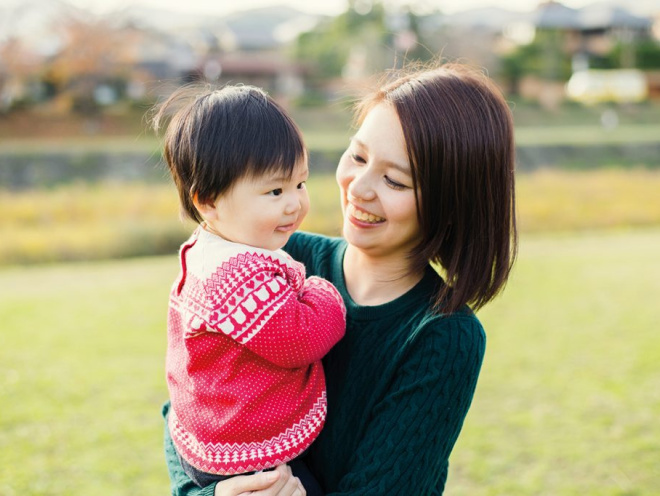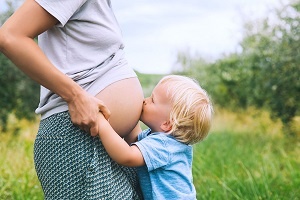Will your second labour be a re-run of your first? Or is there no link between the two? Here we find out what you can expect second time around.
Will my second birth follow a similar pattern to my first?
Every birth is different, and although some women’s labour follows a similar path, others have a very different experience.
If your last birth was difficult, you might have a more straightforward experience this time. Couples often say that they feel more prepared and able to use the strategies they learnt more easily than first-timers.
If you have worries or anxiety about a previous birth, it’s really important to talk them through with someone. Maybe you could chat with your midwife, a supportive friend or your partner (Rcpsych, 2018). Most hospitals offer a birth debrief or listening service so you can chat through your notes with a health professional.
If I have a bigger age gap between children, is the birth more likely to be different?
This doesn’t seem to be the case. But there are a lot of factors that might influence the gap in between your children that may make your labour different. For example, you may be planning to give birth in a different place, have a new partner or have learnt new self-help strategies.
How safe is a VBAC (vaginal birth after caesarean)?
It depends on the reason for the previous caesarean. If you would like to have a vaginal birth for this baby, then the odds are in your favour.
About three out of every four women who have had one previous caesarean go on to have a successful VBAC (RCOG, 2016).
Is labour likely to be faster second time around?
Yes, labour is likely to be shorter with a second or subsequent birth (NICE, 2014).
It is especially likely that the early part will become stronger more quickly, so you might need to consider getting to the place where you will give birth earlier than last time. The average duration of established first stage for women who have given birth before is five hours rather than eight, and it is likely to be shorter than 12 hours instead of 18 (NICE, 2014).
Unless you had a caesarean before, the active (pushing) part of labour is also likely to be shorter too, within two hours rather than three. That’s because your muscles and vagina have done this work before (NICE, 2014).
If I had a fast labour first time, is that likely to happen again?
Yes, for most women their labours are shorter with their second baby. So if you struggled to get to hospital or a birth centre last time, you might want to consider a home birth this time around.
Will I need similar pain management to last time?
If you didn’t have much pain managment last time, you probably learnt which coping techniques worked for you. This time, you might feel more confident and able to manage the strong sensations again using the same methods.
Even if you found it difficult to cope last time, knowing what to expect could mean that you are able to prepare. For example, you could learn a toolkit of breathing techniques or ensure you have a supportive birth partner.
Will my second birth be less painful?
Although the sensations of the contractions are likely to be the same, most women say that they are able to cope with them more easily.
Knowing what to expect and preparing beforehand play a role in this. As labour is often shorter, you won’t feel so tired either (NICE, 2014).
If I had a straightforward birth first time, will that happen again?
The good news is that second births are much more likely to be straightforward. If you’re planning to give birth at a midwifery unit or birth centre, you have a 97% chance of a straightforward birth, compared with 76% last time (Coxon 2014; NPEU 2017).
If you had a straightforward birth last time, this is very likely to be the case again (Coxon, 2014).
Could I have a completely different birth second time round?
Of course, there may be circumstances that make this time more challenging. Overall, most women find that second births are a more positive experience.
I’m feeling afraid of giving birth again, what should I do?
It is very common to have negative feelings about birth after a traumatic experience. You might also have these feelings if you had a straightforward experience before. A fear of birth for a woman who has already experienced birth is known as secondary tokophobia.
It is very important to open a dialogue with your midwife or GP as early as you can in your pregnancy, so you get the support you need (Striebich et al, 2018). You could also want to see what help The Birth Trauma Association (BTA) has on offer on their help page. They’re a charity that supports women suffering from birth trauma.
If you’d like extra support and updated knowledge about the birth process, your birth rights and siblinghood for your other child, you could attend an NCT refreshers course. NCT refresher courses give you a fantastic opportunity to meet other expectant parents having their second or subsequent child. You will also have an opportunity to practise the physical birth skills that can help you to have the birth you want.
The good news is that there are lots of positive stats around second birth experiences. The Birthplace Study found that women who had already had one baby had just as strong a chance of a positive outcome at a home birth as in a hospital (NPEU, 2017).
This page was last reviewed in November 2018.
Further information
Our support line offers practical and emotional support with feeding your baby and general enquiries for parents, members and volunteers: 0300 330 0700.
We also offer antenatal courses which are a great way to find out more about birth, labour and life with a new baby.
Make friends with other parents-to-be and new parents in your local area for support and friendship by seeing what NCT activities are happening nearby.
Coxon K. (2014) Birthplace and you. Available from: https://www.nhs.uk/Conditions/pregnancy-and-baby/Documents/Birth_place_decision_support_Generic_2_.pdf [Accessed 1st January 2019]
NICE. (2014) Intrapartum care: care of healthy women and their babies during childbirth [CG190]. Information for the public: what happens during labour? Available from: https://www.nice.org.uk/guidance/cg190/ifp/chapter/what-happens-during-labour [Accessed 1st January 2019]
NPEU. (2017) Birthplace in England Research Programme. Available from: https://www.npeu.ox.ac.uk/birthplace [Accessed 1st January 2019]
RCOG. (2016) Birth options after previous caesarean section. Available from: https://www.rcog.org.uk/globalassets/documents/patients/patient-information-leaflets/pregnancy/pi-birth-options-after-previous-caesarean-section.pdf [Accessed 1st January 2019]
Rcpsych. (2018) Post traumatic stress disorder. Available from: https://www.rcpsych.ac.uk/mental-health/problems-disorders/post-traumatic-stress-disorder [Accessed 1st January 2019]
Striebich S, Mattern E, Ayerle GM. (2018) Support for pregnant women identified with fear of childbirth (FOC)/tokophobia - A systematic review of approaches and interventions. Midwifery, 61:97-115. Available from: https://www.ncbi.nlm.nih.gov/pubmed/29579696 [Accessed 1st January 2019]







